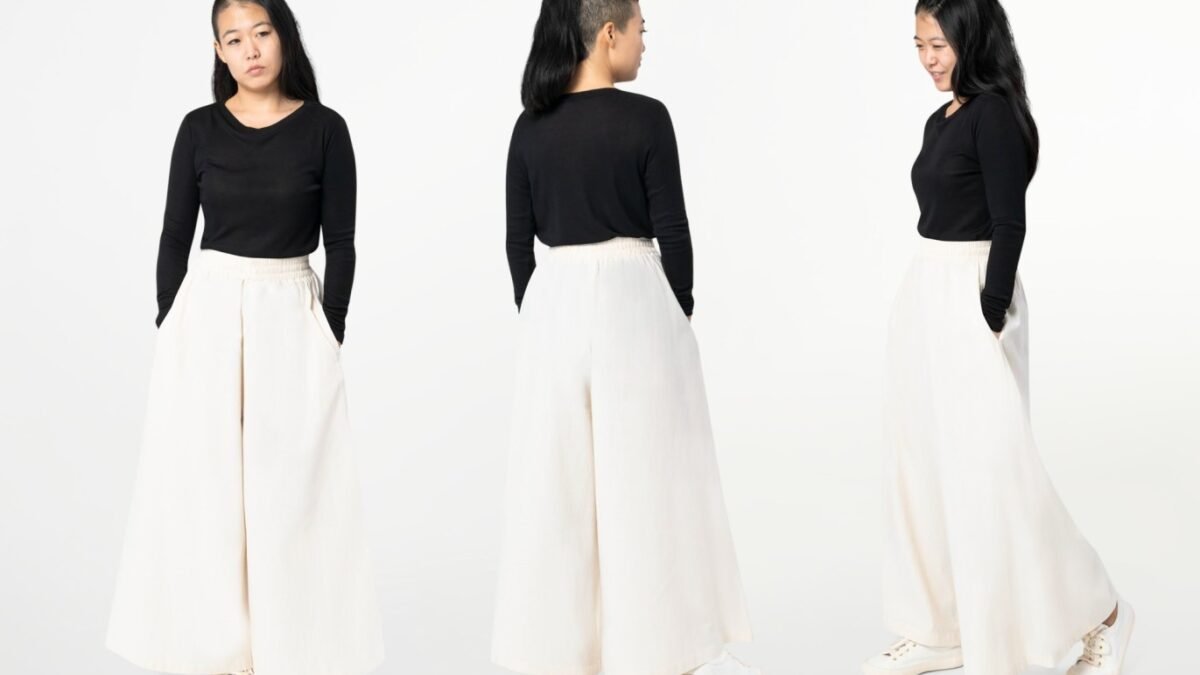
The fashion industry has a significant negative impact on the environment. Clothing production uses massive amounts of water, produces high levels of carbon emissions, and generates large amounts of waste. Fast fashion in particular, with its rapid production cycles and encouragement of overconsumption, exacerbates these issues. Reducing the environmental impact of fashion requires a multifaceted approach, from sustainable design to reducing waste.
Some key statistics on the fashion industry’s environmental impact:
- It is responsible for 10% of global carbon emissions – more than international flights and maritime shipping combined.
- It uses around 79 trillion liters of water per year – enough to fill 32 million Olympic-sized swimming pools.
- Less than 1% of material used to produce clothing is recycled into new clothing.
This level of resource consumption and waste is clearly unsustainable. Action must be taken to transform fashion into a more eco-friendly industry.
The negative effects of fast fashion on the environment
Fast fashion refers to the rapid production of inexpensive, trendy clothing to satisfy constantly changing consumer demand. While fast fashion has made clothing more affordable and accessible, this business model promotes overconsumption and disposability.
Some of the key environmental impacts of fast fashion include:
- Excessive water usage: Cotton cultivation and textile dyeing require enormous amounts of water. It can take over 2,000 gallons of water to produce 1 t-shirt.
- Increased energy consumption: Fast fashion supply chains use more energy for rapid production and international shipping. Most energy comes from fossil fuels.
- Textile waste: Consumers discard over 70 pounds of clothing annually. Synthetic fabrics like polyester are not biodegradable.
- Microplastic pollution: Washing clothes releases microplastics into waterways. Each wash can release over 1,900 microplastic particles.
- Chemical pollution: Toxic chemicals are used for cotton pesticides and synthetic textile production. These enter ecosystems.
Fast fashion brands overproduce and consumers overpurchase, leading to a wasteful system. Exponential growth cannot continue without severe environmental damage.
Sustainable fashion options and eco-friendly design practices
There are various ways the fashion industry can become more sustainable. Here are some top approaches:
Sustainable materials
- Organic cotton: Cotton grown without pesticides or chemicals. Organic farming benefits biodiversity and reduces pollution.
- Hemp: Requires less water and pesticides than cotton. Naturally antibacterial and biodegradable.
- Recycled synthetics: Polyester, nylon and other synthetics can be made from recycled plastic bottles, fishing nets and other waste.
- Sustainably sourced wool: Ethical wool production without mulesing or overgrazing practices. Uses less processing for dyeing and washing.
- Bamboo: A renewable and biodegradable material that generates 30% more oxygen than trees. Requires less processing than cotton.
Eco-friendly production
- Renewable energy: Using wind, solar and other renewables rather than fossil fuels for facilities and transportation.
- Water reduction: Implementing new dyeing and manufacturing techniques to minimize water usage.
- Ethical labor practices: Ensuring no child labor or worker exploitation throughout the supply chain.
Sustainable business models
- Circular fashion: Designing clothing for reuse, repair and recycling. Encouraging renting, swapping and thrifting over purchasing new items.
- Slow fashion: Producing better-quality, timeless clothing in limited quantities. Made to last rather than be trendy fast fashion.
- Localized production: Manufacturing clothing closer to end consumers reduces shipping emissions. Also allows for greater oversight.
Implementing even some of these design and business model changes can greatly reduce the fashion industry’s environmental footprint.
The importance of reducing textile waste and promoting circular fashion
Reducing textile waste is crucial for creating an eco-friendly fashion system. On average, consumers throw away 70 pounds of clothing annually. Landfills are overflowing with discarded fast fashion items that could have been reused or recycled.
Some key strategies for reducing textile waste include:
- Designing durable, quality items that can be worn for longer
- Facilitating clothing repair, alterations, and restyling to extend lifespan
- Enabling clothing rental so items see more use before disposal
- Improving clothing recycling systems and textile-to-textile recycling technology
- Developing new products made from recycled textile waste materials
Circular fashion essentially aims to eliminate textile waste by keeping clothing in use. It involves:
- Designing recyclable clothing made of mono-materials (single fibers)
- Manufacturing clothing so it can be taken apart and reused
- Encouraging consumers to rent, swap, and thrift shop rather than purchasing new fast fashion
- Recycling used clothing into new fabrics and products
Circular systems promote resource efficiency and sustainability. If done properly, circular fashion could provide high-quality clothing while reducing environmental damage.
Conclusion and call to action
The fashion industry in its current state of mass production and overconsumption is environmentally unsustainable. However, through innovation and reduced waste, fashion can lower its footprint while still meeting consumer demand.
Here are some key actions various stakeholders should take:
For fashion brands:
- Utilize eco-friendly materials, energy-efficient production, and ethical labor practices
- Design quality, durable items that can be reused, repurposed or recycled
- Support textile collection initiatives and clothing recycling R&D
For policymakers:
- Provide incentives and invest in sustainable technologies like textile recycling
- Implement Extended Producer Responsibility requiring brands to pay for clothing disposal
- Support non-profit initiatives to promote sustainability and slow fashion alternatives
For consumers:
- Purchase higher-quality, sustainably made clothing over fast fashion
- Donate or resell unwanted clothing rather than sending it to landfills
- Wash clothes less frequently, and use eco-friendly laundry detergent
- Support brands pioneering sustainable practices through purchases
With collaboration across stakeholders, the fashion industry can transform itself to be a driver of environmental progress rather than damage. But action must be taken quickly before it is too late.













